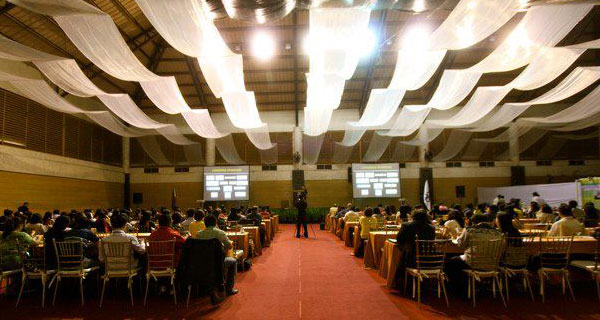By Dr. Cecile Tuano and Dr. Irene Yu
The 6th Biennial Regional Orthodontic Congress of the Association of Philippine Orthodontists was held in the picturesque Tagaytay Highlands last August 8 and 9, 2011. APO President Dr. Robert Tan welcomed all the congress participants, thanking all the sponsors and trade dealers who generously helped APO in this endeavor. He then singled out each of the foreign guests who came to actively participate and support this APO event. They include Asian Pacific Orthodontic Society (APOS) President Dr. Woh Kai Loh, his wife Mrs. Lynden Loh, World Federation of Orthodontists (WFO) executive committee member and President of the Thailand Association of Orthodontists Dr. Somchai Satravaha, APOS secretary general Dr. Tanan Jaruprakorn, APOS executive committee member and Singaporean orthodontist Dr. Bryce Lee, APOS executive committee member and Indian Orthodontic Society President Dr. N. K. Abuja, President of the Taiwan Association of Orthodontists (TAO) Dr. Wei-Hung Hsu, TAO Secretary general Dr. Erh-Hui Tsai, TAO member Dr. William Choi, Ormco regional manager Mr. Bruce Arnold who was instrumental in bringing over our guest speaker for the day, Dr. Geoffrey Hall.
Dr. Hall of Australia gave a very extensive and enlightening lecture on various topics which covered : Treatment of severe malocclusion which require co-management with the restorative dentists, endodontists, periodontists & oral surgeons; the differential diagnosis of deepbite and associated worn dentition; management of worn/abraded teeth, excessive gingival display & the correction of black triangular spaces; management of patients with periodontal defects & poor crown-root ratio; management of peg-shaped lateral incisors; opening or closing of spaces for missing teeth; movement of teeth in all planes of space to achieve bone regeneration; the controversial issue of tooth transplantation. He also touched on various forms of Invisible Appliances i.e. lingual braces and invisalign. He likewise offered various tricks and techniques to treat patients efficiently using self –ligating brackets.
Dr. Benedict Wilmes from the University of Dusseldorf, Germany gave a very interesting seminar about a novel approach in the use of implants –Benefit palatal implants (PSM Medical solutions) with interchangeable heads for anchorage and movement of teeth in all three dimensions. He demonstrated that with just one or two palatal implants, molar distalization and mesialization, rapid palatal expansion, intrusion, periodontal ligament distraction can be done simultaneously or singly with this system. Like other TAD’s systems, the Benefit palatal implants preclude too much dependence on patient compliance, reduces reliance on dentition for anchorage, lessens the risk of periodontal problems and increases the range of treatment possibilities with the help of these anchorage system. This anchorage system offers the following advantages: less extractions; no need for extra-oral appliances e.g. headgears; minimal labial brackets for specific treatment objectives e.g. space closure, pre-prosthetic intrusion and uprighting; and avoidance of surgery.
Some of the useful tips he shared are the following:
- Conical mini-implants have replaced the cylindrical ones.
- The greater the diameter of the mini-implant, the more retentive it is.
- Self-tapping mini-implants are phasing out. Self-drilling implants are more commonly used.
- Consider root morphology and soft tissue in choosing the ideal insertion site of implants.
- Implants should be placed in attached gingiva. There is a higher risk of infections and complications if implants are placed in movable mucosa.
- Implants are placed in an oblique direction to avoid touching the roots, to increase the length of implant in the bone and increase the contact with cortical bone.
- Implants are not usually placed in the lingual area of the mandible due to the increased risk of the implant touching the root and more reported failures.
- Guides are not used anymore in the placement of implants.
- The angulation of the implant is more important (oblique) rather than the site of insertion.
- Mini implant dimensions depend on the bone quality, available space, anticipated load and soft tissue thickness.
Other uses of the Benefit and Beneplate systems using advanced mechanics are:
- Forced extrusion of impacted centrals
- Rapid palatal expansion using a Hybrid Hyrax in conjunction with a mentoplate for Class III treatment followed by the use of the same implants to distalize the molars to relieve space problems
- Alignment of canine and mesialization of molars without bonding brackets on the teeth
For additional information, please check the following websites: www.mondeal-ortho.com, www.uniklinik-duesseldorf.de, and www.psm.ms. Scientific publications of the Benefit system can be viewed at http://psm.ms/en/benefitpublications.html.





 Views Today : 1235
Views Today : 1235 Total views : 6335797
Total views : 6335797 Who's Online : 5
Who's Online : 5